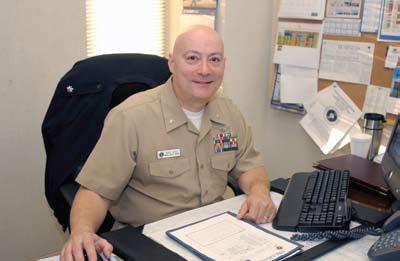
17 minute read
Maintenance and ORM
from Spring 2008
I am truly honored to have been the editor of Mech and incredibly proud of the hundreds of maintainers who wrote e-mails and told leaders that the magazine was an integral part of your day-to-day safety efforts. You told us how you used Mech in shop training and safety lectures and the critical role it played in maintenance and safety efforts. have been fortunate to visit and work with many O- and I-level Navy and Marine Corps aviation units around the world. In addition to the safety surveys and culture workshops that give you a unique perspective on both positive and negative trends, we also provide a good look at how ORM is being implemented in the fleet.
In this and every issue of Mech, you will read stories of woe from the maintenance world. I believe most of these incidents could have been mitigated through proactive use of ORM. Whether the long, deliberate five-step process or on the fly, time-critical type, maintainers must identify the hazards being faced, assess the risk, make risk decisions, implement controls, and supervise, supervise, supervise.
Advertisement
This issue, in particular, has several stories about a long-time problem that spikes from time to time: inadvertent activation or ejection of CADs, flares and chaff, along with dropped drop tanks. It seems we face this problem every couple of years. We put a lot of attention on the issue. It stays in check for a few years but then comes back to bite us in the butt. I have a few thoughts about ORM, how it applies in maintenance situations and fits this issue, and about recurring maintenance problems.
We all are tasked with incorporating ORM into everything we do, and to be frank, what we have seen is that the only thing that happens in this area is the yearly training “check in the block.” I don’t see ORM added to maintenance-training plans. I don’t see tangible ORM practices being identified in the safety-council meetings or actively used in shops. I have yet to find an organi
Mech is your magazine. I simply was the lucky guy to assemble it each quarter and bring useful stories to light.
LCDR John Ruane will take over. John was a plane captain in E-2s and a maintainer in P-3s before becoming an officer. I’m sure he’ll do a great job. I’m not going
By Cdr. Bert Ortiz
Imentioned in my last story that I
far and will stay involved at some level. Thanks. Dan. zation with a true, “model” maintenanceORM program that I can point at and show you a way to incorporate ORM principles practically. Sure, we see the principles generally applied in maintenance meetings, pre-aircraft wash or move briefs, work-center meetings and passdowns, but these things have not changed in the 30 years I’ve been in the Navy. So how do we truly incorporate ORM and have it improve our business in a tangible way? I always recommend each unit do a deliberate review on major maintenance evolutions (engine or stab changes) or even a minor one (aircraft move or wash). Do it during your training day or during the safety-council meeting. Look it up on TRACS, which is the online, total risk-assessment-and-control system. It already may have been done, and you can save time and effort! When you do this deliberate review and identify, assess and mitigate all the risks associated with that evolution, you’ll end up with a pretty decent briefing guide for the task.
One additional thing you can do is to ask this question on the bottom of the deliberate review: “What’s changed or different today?” This one simple step will make the review valid for the time you use it, and do use it each time you brief a task. Post it on TRACS for others to use as well! It truly can be a great tool to get a fresh look at things each time and really apply all that training in ORM. Go ahead…stir it up!
Next time I’m around your unit, show me what you’ve done to inculcate ORM in maintenance. Give me the location I can point to as the model program!
Cdr. Ortiz is the maintenance officer at the Naval Safety Center.
Chaff, Flares and CADs Can Kill
By George Alston
The ALE-39 and ALE-47 countermeasures dispensers have saved many lives and aircraft. This same system can be deadly when maintenance technicians fail to follow safety procedures found in the maintenance manuals.
We’ve had too many reports of maintenance error and inadvertent ejection of chaff, flares and cartridges. The attached excerpts taken from one of many recent reports—this one an ALE-47 explosive event report (EER)—show the affects in one case. Unfortunately, we’ve had a rash of cases, and everyone who handles these items needs to be aware of the dangers faced every day with these small but powerful items.
Navy photo by MC1 Eric Benson
AO3 Cary Buel installs a MJU-49/B Decoy Flare bucket into the ALE-47 Counter Measure Dispensing system on a P-3C Orion assigned to VP-9. The Counter Measure Dispensing system is vital to the survivability of the P-3C by enabling the crew to dispense chaff and flares in defense of enemy fire.
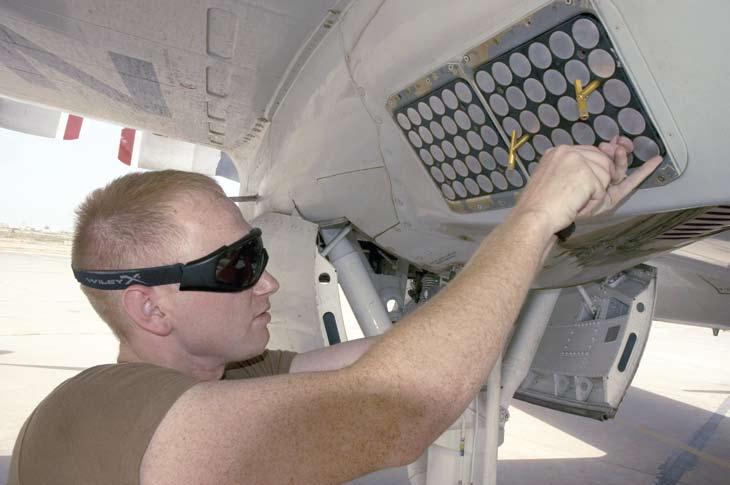
1. CHAIN OF EVENTS: A CH-53E AIRCRAFT CONFIGURED WITH 30 MJU-32 AND 30 MJU-49 RETURNED FROM AN ARMED MISSION WITH AN ALE-47 DISCREPANCY. THE AIRCREW PROPERLY DE-ARMED THE ALEPODS AND CONDUCTED A NORMAL SHUTDOWN. THE ORDNANCE DIVISION WAS TASKED BY MAINTENANCE CONTROL TO REMOVE THE DISPENSER MAGAZINES AS SOON AS POSSIBLE. THE HELICOPTER AIRCRAFT COMMANDER(HAC) DEBRIEFED THE SENIOR T/M/S AVIONICS TECHNICIAN THAT, ALTHOUGH THE ALE47 CIRCUIT BREAKERS WERE PULLED OUT AND THE CONTROL PANEL WAS ON STANDBY, THE ALE CONDUCTED AN IN-FLIGHT UNCOMMANDED DISPENSING OF FLARES.THIS AIRCRAFT WAS NEEDED THE NEXT DAY FOR A COMBAT MISSION, SO MAINTENANCE CONTROL REQUESTED THAT THE ORDNANCE DIVISION ASSIST THE AVIONICS DIVISION WITH THE ALE-47 DISCREPANCY. AVIONICS SENT THREE TECHNICIANS TO THE AIRCRAFT TO INVESTIGATE THE PROBLEM. THE ALM-290 TEST SET WAS NOT READILY AVAILABLE, SO THE ORDNANCE TECHNICIAN ASSIGNED TO ASSIST AVIONICS LEFT THE EXPLOSIVE EVENT AIRCRAFT TO RETRIEVE THE TEST SET FROM A CONCURRENT AH/UH DOWNLOADING EVOLUTION IN ANOTHER LOCATION ON THE AIRFIELD. TECHNICIAN #1 WRONGLY ASSUMED ALL EXPENDABLES HAD BEEN REMOVED AND PROCEEDED DIRECTLY INTO THE AIRCRAFT WITHOUT INSPECTING THE MATERIAL CONDITION OF THE ALE PODS.
HE DISCONNECTED THE APPROPRIATE CIRCUIT BREAKERS AND THEN APPLIED POWER TO THE AIRCRAFT IN ORDER TO METER THE APPROPRIATE ALE COMPONENTS. TECHNICIAN #1’S TROUBLESHOOTING REVEALED THAT THERE WAS NO POWER GETTING TO THE SYSTEM. TECHNICIAN #1 THEN PUSHED IN THE CIRCUIT BREAKERS, WHICH ENERGIZED THE SYSTEM WITH 28 VOLTS AT THE CIRCUIT BREAKER. TECHNICIAN #1 EXAMINED THE FIRING SWITCHES IN THE CABIN AND REALIZED NONE OF THE COUNTERMEASURE DISPENSING SWITCHES HAD ILLUMINATED.HE THEN ASKED TECHNICIAN #2 TO ARM BOTH ALE-47 PODS, WHICH STILL HAD NOT BEEN DOWNLOADED BY THE ORDNANCE DIVISION.
TECHNICIAN #2 ASSUMED THAT EVERYONE WAS AWARE THAT THE PODS WERE STILL LOADED AND WITHOUT HESITATION ARMED THE PODS. TECHNICIAN #1, WHO WAS SITTING ON THE JUMPSEAT NEAR THE COCKPIT, REQUESTED TECHNICIAN #3 TO PLACE THE ALE-47 GROUND OVERRIDE SWITCH INTO THE ON POSITION. TECHNICIAN #1 PRESSED THE ALE FIRING SWITCH IN THE CABIN, WHICH RESULTED IN ONE FLARE BEING JETTISONED FROM EACH ALE POD. TECHNICIAN #1 INSTANTLY RECOGNIZED THAT COUNTERMEASURES ORDNANCE HAD BEEN EXPENDED AND SHUT THE AIRCRAFT AUXILIARY POWER PLANT OFF AND REPORTED THE INCIDENT TO THE CHAIN OF COMMAND. 1. CAUSE OF MISHAP OR DEFICIENCY: HUMAN ERROR, CAUSE DESCRIPTION:
MAINTENANCE LEADERSHIP DID NOT COMMUNICATE PRIORITIES TO WORKCENTERS. THERE WAS A LACK OF SITUATIONAL AWARENESS BY THE AVIONICS TECHNICIANS. JUNIOR AVIONICS TECHNICIANS DISPLAYED A LACK OF ASSERTIVENESS.THERE WAS A FAILURE TO ADHERE TO ESTABLISHED PROCEDURES AND APPLICABLE MIMS BY MAINTENANCE PERSONNEL.THERE WAS A FAILURE OF MAINTENANCE PROCESS AND CONTROL OF WORK. 2. PERSONNEL FAILED TO FOLLOW PROPER PROCEDURE, OR FOLLOW APPLICABLE MIMS 3. PERSONNEL WERE ATTEMPTING TO EXPEDITE MAINTENANCE ACTION FOR FOLLOW-ON MISSIONS.
C. THE SUPERVISOR WAS PRESENT, QUALIFICATIONS OR CERTIFICATIONS:
NOT REQUIRED, THE INDIVIDUAL WAS TRAINED IN THE TASK.
GOLF: RECOMMEND THAT REFRESHER COURSES BE CONDUCTED FOR ALL PERSONNEL PRIOR TO ANY INITIAL AVIATION ORDNANCE EVOLUTIONS EMPHAZING ORDNANCE SAFETY AND AWARENESS. RECOMMEND THAT THE SENIOR TECHNICIAN INVOLVED IN THE EXPLOSIVE EVENT CONDUCT AFTER-ACTION BRIEFS FOR ALL MAINTENANCE DEPARTMENT PERSONNEL WITH AN EMPHASIS ON ORDNANCE SAFETY, AWARENESS, AND THE IMPORTANCE OF FOLLOWING PROPER MAINTENANCE PROCEDURES. LESSONS LEARNED ARE AS FOLLOWS: 1) CONDUCT A MAINTENANCE COORDINATION MEETING IMMEDIATELY FOLLOWING ORDNANCE EVOLUTIONS IN ORDER TO ESTABLISH PRIORITIES AND MAINTENANCE GUIDANCE FOR ALL WORKCENTERS. 2) MAINTENANCE TECHNICIANS ASSIGNED TO CONDUCT MAINTENANCE/TROUBLESHOOTING ON ORDNANCE EVOLUTION AIRCRAFT MUST CONDUCT A THOROUGH LOOK-INSPECTION, PAYING PARTICULAR ATTENTION TO AIRCRAFT WEAPONS STATIONS. ENSURE THE TECHNICIANS THEN DISCUSS THE UPCOMING MAINTENANCE EVOLUTION. 3) ENSURE DOCUMENTATION HAS BEEN COMPLETED AND THAT EACH AIRCRAFT IS IDENTIFIED AS HAVING ORDNANCE ABOARD. 4) ALWAYS UTILIZE CHECKLISTS AND APPLICABLE MAINTENANCE MANUALS. IN CONCLUSION, REFRAIN FROM BEING IN SUCH A RUSH THAT YOUR ACTIONS COMPROMISE SAFETY. ASK QUESTIONS IF YOU HAVE DOUBTS. COMPLACENCY KILLS.
This message pointed out a few things that can and should take place. However, another step that might help prevent problems that maintenance technicians cause would be to have them sign a statement on the MAF before going out to the aircraft. The statement would say: I will check each dispenser on the aircraft for magazines. I will not do maintenance on an aircraft with magazines installed in a dispenser. This one simple statement may make them more aware and less likely to have a problem.
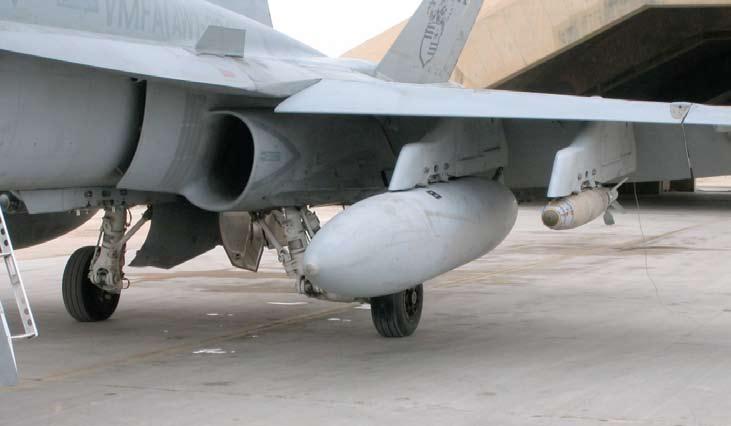
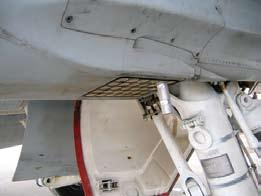
Aircraft with PODs (helos) would have an additional sentence: While performing maintenance on the aircraft, I will not place the POD arm/safety handle in the arm position if a magazine is installed in the dispenser.
Anyone dealing with chaff, flares or CADs needs to heed the warnings pointed out in this story and in the supplied message. If not, the next story may be about the death or serious injury to a maintainer.
Mr. Alston works with the EW Fleet Support Team, NAVAIR ISSC (AIR 4.5.4.1), Jacksonville, Fla.
The new Tire and Wheel safety poster is in and can be ordered online at www.safetycenter.navy.mil, under media and safety posters.
One Job at a Time
By AE2 Andrew Peterson
Everyone tried to tell me about the vast differences between the “small boys” and a carrier, in terms of size, speed, and scope of operations. No big deal, I thought. I understood that my role as a maintainer boiled down to two primary functions: to fix and maintain the helos in the hangar bay, and to launch and recover the helos on the flight deck. Well I learned a new lesson one day when I rushed from the hangar bay to the flight deck between jobs.
The incident occurred on my first carrier cruise aboard USS Kitty Hawk as an SH-60B maintainer for HSL-51 Det. 3. All my previous deployments with the squadron for nearly four years had been on guided-missile cruisers as part of a one-aircraft detachment. I really didn’t think this ship would be any different. Boy was I wrong!
Warlord 703 was well into scheduled phase maintenance and fully de-paneled in the hangar bay. I was doing a standard fire-bottle op-check and going stepby-step on the IETMS laptop. The fire bottles and the CADS had been removed from the aircraft, and the voltmeter verified no stray voltage existed. To test the 10g impact-switch circuit, I disconnected the cannon plug and ran an insulated jumper cable across the leads. This simulates the impact of a 10g crash landing when the fire-extinguisher circuit breaker is closed, which then would discharge both fire bottles simultaneously. The fire bottles were removed at this point.
All checks were good! I was in the process of finishing up the last few steps, when I got called to the flight deck to recover Warlord 710. No sweat, I thought, the phase would be over in record time. As I was climbing the ladder to the flight deck, all I could think about was the rapid progress on 703. The fact that I had left the insulated jumper cable attached to the impact-switch leads must have slipped my mind.
We recovered 710 and finished the normal routine of engine wash, fold and stuff in the helo hole. Everyone on night check, including myself, spent the remainder of the evening on inspections and gripes written after 710’s flight.
The following day, the AOs began hooking up the CADS and fire bottles on 703. As it so happened,
Knowing the system and how to prevent problems is the key to success.

another maintainer closed the fire-extinguisher circuit breaker during the course of the phase. The inevitable result was the discharge of the No. 2 fire bottle into the No. 2 engine. Fortunately, the No. 1 fire bottle had not been connected yet, or it would have fired, too.
When I got the word, I was in utter disbelief. How could I make such a simple mistake? Needless to say, my senior chief was in utter disbelief as well! I can’t repeat some of the words he had for me.
These CADS can injure people. I can’t imagine how I would have felt had I been responsible for a shipmate losing his finger, hand, sight, or even his life. Thankfully, no one was hurt because of my carelessness. Despite being the lead AE on my detachment, I put another person at risk because I forgot to remove a 4-inch piece of wire. I forever will be reminded of this incident each time I CDI a discrepancy.
I have heard the words, “In this job, distractions can be deadly,” but they mean much more to me now. I learned an important lesson: Maintainers must do every job, no matter how big or small, from start to finish. And do one job at a time.
Petty Officer Peterson works in the AE shop at HSL-51.
By AE2(AW/SW) Stephanie Teixeira
One evening during deployment, pilots were manning up for the first night launch. As a troubleshooter with VFA-136, I was making my way to the back of the jet to check hydraulic gauge No. 1 on the left side of the aircraft, while one of our pilots climbed into the cockpit. The night was ready to heat up.
As I was writing down the numbers on the launch card, the pilot started the APU. Normally, when the APU starts at night, you can see some orange flames coming from the exhaust. However, this time, the flames kept growing bigger and wider. They started hitting the deck and flowing out the sides of the aircraft. I was worried because the flames were larger than I ever had seen before, so I gave the PC the fire signal with my wand. The PC was confused at first but eventually gave the pilot the shutdown signal. The APU spooled down, and the fire went out.
I had been watching the PC and knew that he did not pass the correct signal for an APU fire. So, to clarify

the situation, I ran up to the starboard side of the jet and yelled to the pilot, “You had an APU fire.” In the meantime, our flight-deck chief and another troubleshooter already had started to pump up the APU. To make sure we didn’t have any mixed signals, I crossed to the port side of the FA-18C, climbed up the ladder, and told the pilot what had happened. I could have just plugged into the aircraft to pass that information; however, that would have taken too long. I told him to wait for us to pump up the APU, so we could try the start again. He acknowledged what I told him by saying “OK,” so I climbed down from the LEX to help the other troubleshooter with the APU.
Once we were ready to start again, we gave the PC the signal to start the APU, and the pilot started the jet without incident. After final checks, the flight-deck crew broke down the jet and taxied it toward the catapults. A few minutes later, the pilot called himself down and taxied back for shutdown. What the heck had happened now?
Navy photo by PH1(AW) Brien Aho
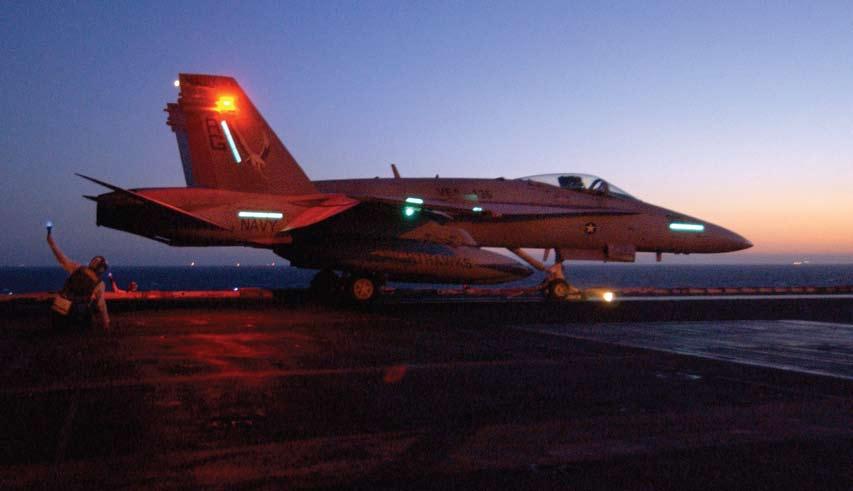
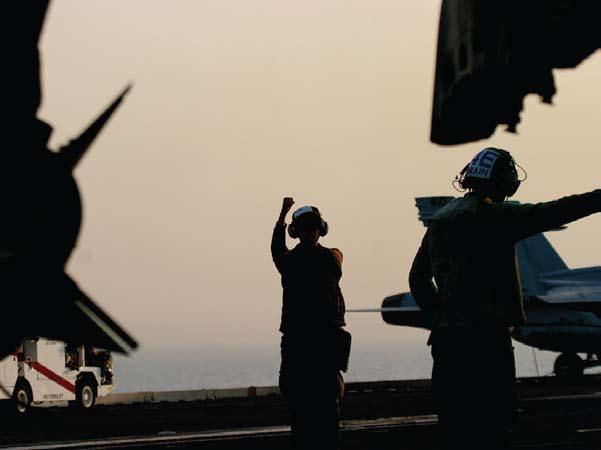
It turned out the jet was down before it was started the second time. The pilot noticed during the first start that his jet was getting a lot of attention on the flight deck. He looked at his PC, who was a new trainee, giving him a signal with the light wands. The pilot became confused because the signal appeared to be a cross between the start and shut-down-engine signals. In the background, the pilot thought he saw the PC instructor standing behind the PC trainee give a fire signal without wands. Based on the conflicting signals and confusion, the pilot decided it was best to shut off the APU. The pilot was anxious because he did not understand what was going on. When he saw me mouth the word “fire” from the right side of the jet, he decided to execute the first steps of the APU fire-emergency procedure, which was to blow the fire-extinguisher bottle. However, since things seemed to have calmed down around his aircraft, he never completed the procedure, which called for him to exit the aircraft. No one on the deck and around the aircraft knew that the pilot’s emergency procedures were to blow the fire bottle. Had we known, or had the pilot climbed out of the jet, we would have suspected that the jet was down.
The pilot assumed we knew that he had fired the extinguisher, but we had no idea. In fact, the troubleshooter in the wheel well pumping up the APU noticed a hissing sound and had mist spray into his face, but he didn’t think it was the fire-extinguishing agent from the bottle. Since no one had heard the CADS fire, no one thought of checking the fire bottle or asking the pilot if he had blown the extinguisher. Had the troubleshooters checked the MMP codes before the chocks and chains had been removed for taxi, we would have seen a 988 code, indicating that the fire bottle had been discharged. We instantly would have known that the jet was down. When I talked to the pilot after I climbed up the ladder, he did not mention the extinguisher because he thought I already knew. Thinking that we needed the jet turning to troubleshoot, he restarted it. Only later, as he taxied toward the catapult, did the CATCC representative confirm he was down.
In the end, we learned many lessons from this experience. Everyone must play an active role and communicate clearly and concisely with each other. A PC trainee must have better supervision with a new pilot. PC instructors need to take charge and pass proper signals if their trainee doesn’t handle a situation correctly. They also should have their own set of wands. PC trainees must know their emergency signals. It’s important that all maintainers know emergency procedures. In our case, only maintainers with a low-power turn qual knew the pilots’ APU fire procedures. Implementing training like this will keep the ground crew from trying to restart the APU after a fire-bottle discharge.
Regardless of what is going on, procedures must be followed. Because of the fire, the ground crew got behind and felt rushed trying to launch the jet before the catapults were secured. As a result, we forgot to check the MMPs. Had we stopped for a second and reviewed our procedures, this situation wouldn’t have happened.
Even though each of us thought we knew what was going on, none of us knew all that had happened until well after the incident. Fortunately, the extinguishing agent did not harm the troubleshooter, and the jet did not go flying in a down status. We shouldn’t depend on luck, but we were lucky that this incident cost us only a sortie.





